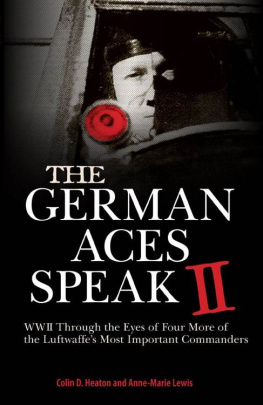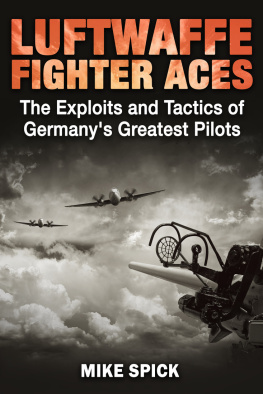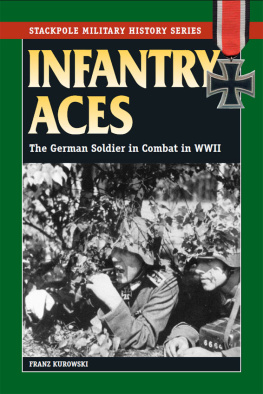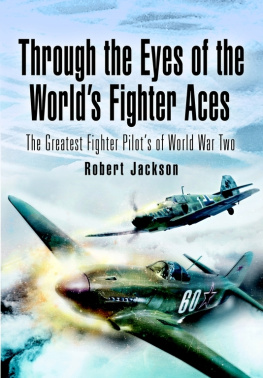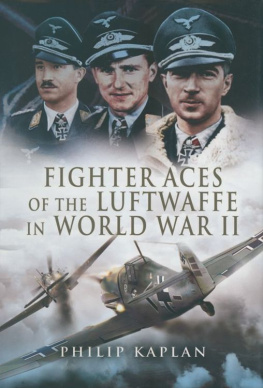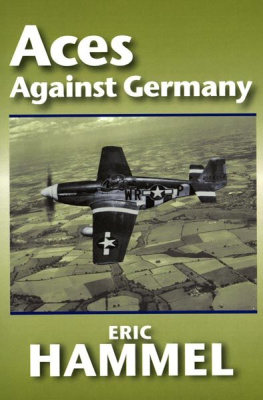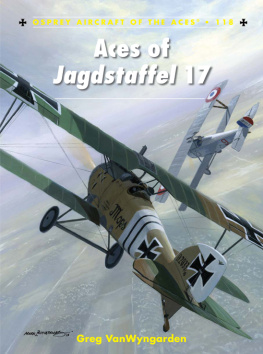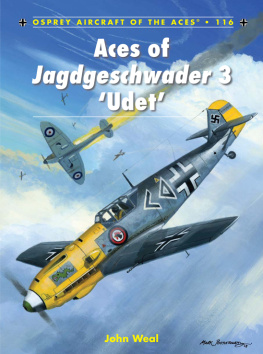The German Aces Speak II

World War II Through the Eyes of Four More of the Luftwaffes Most Important Commanders
Colin D. Heaton and Anne-Marie Lewis

This book is dedicated to the men who flew fighters in World War II, and especially to our late friends, Col. Edward R. Buddy Haydon, USAF, who flew in the 352nd Fighter Group, and his wonderful late wife, the lovely Nelda. She waited for him to return despite the odds. They are missed very much and always remembered.
Maj. Urban L. Ben Drew, USAF, also left us for his final sortie, and his friendship and assistance over the years are a part of the lasting legacy of the history we produce.
The warrior merely carries the sword on behalf of others. His task is a lordly one, because the warrior still agrees to die for the mistakes of others.
Alexandre Sanguinetti
Contents
The Blond Knight of Germany:
Oberst Erich Hartmann
The Luckiest Man Alive:
Gereraloberst Johannes Steinhoff
A Leader of Aces:
Generalmajor Dietrich Hrabak
The Third Man:
Generalleutnant Gnther Rall
Acknowledgments
W E WISH TO THANK all of the Luftwaffe men who assisted with this series of projects over the years, especially the men featured in this volume. We also wish to thank Norman Melton for his perpetual assistance and friendship as well as longtime friends Mike and Ursula Steinhoff Bird. They have been the most supportive people over the last two decades. We also thank Dr. Dennis Showalter and Trevor J. Constable for their assistance and interest in our works over the years, and for writing the forewords. Thanks also to former Luftwaffe pilots Jorg Czypionka and Kurt Schulze for proofreading the manuscript.
We also wish to thank the men mentioned in this book for their friendship and assistance, as well as granting the many interviews over the years before they left us: Erich Hartmann, Johannes Steinhoff, Dietrich Hrabak, and Gnther Rall. They were fine men and good friends. Special thanks to our friends, the late Colonel Raymond F. Toliver and Trevor J. Constable, who brought the men of the Luftwaffe to the postwar world and created the great interest in the subject. It was they who created my interest, which persists to this day.
Special thanks to our agent, Dr. Gayle Wurst of Princeton International Agency for the Arts. Her dedication and diligence have been a key factor in the production of our projects, and for that we are eternally grateful. We would also like to mention Steven Daubenspeck, Elizabeth Demers, Scott Pearson, and Erik Gilg at Zenith Press and thank them for their support in bringing the voices and stories of these aces of World War II to life.
Introduction
L IKE THE FIRST VOLUME in this series, this book focuses on four German fighter pilots who were not only heroes to their nation but also brave men embroiled in a war beyond their control, dedicated to their code of honor as aviators. They were gentlemen of the old school, warriors in a violent conflict who believed in the code of chivalry and fair play. This may sound archaic now, given the devastation of the Second World War and the horrors of the Holocaust, which painted all wartime Germans with a demonic brush, especially after the world awoke to the scope of the almost unspeakable genocide that the Nazis had wrought.
Detractors will try to argue that the airmen of the Luftwaffe were no better than the Einsatzgruppen, the extermination squads that followed German forces and eliminated undesirables per the grand plan. This collective predisposition is, unfortunately, grounded upon misinformation and postwar perceptions. It is of utmost importance to present accurately the men behind the successes and tragedies of the war. We created this series of books to present the personal stories of German aviators in their own words. This oral history method provides a deeper understanding of the nature and evolution of aviation history as well as the agonies and victories these warriors endured. The four German pilots included in this series were like their fellow professional soldiers in that they were dedicated to the survival and protection of their country and their people. As authors, we have found many verified examples of Germans who acted with impeccable conduct and honorable intent; readers thus have the unique opportunity to examine the war from their perspectives.
Many of these men received high postwar security clearances and positions, and somesuch as Johannes Steinhoff, Dietrich Hrabak, and Gnther Rallreached the apex of the command structure within the North Atlantic Treaty Organization (NATO). Steinhoff, Hrabak, Rall, and Erich Hartmann are just four representatives among the tens of thousands of young men who may not have wanted a war and may not have believed in their nations political platform.
The recollections from these four aces are the expanded, unabridged versions of interviews we conducted over many years, as time allowed, with Hrabak, Hartmann, Steinhoff, and Rall, and which we have previously published in abridged format in various magazines such as World War II, Aviation History, and Military History. Whenever possible, we used relevant secondary and primary source material to corroborate and supplement the aces oral testimony.
We present these aviators thrilling stories of the war to educate and entertain readers, and to provide an insight into the German perspective on the greatest conflict in history.
Foreword
By Dr. Dennis Showalter
N EVER DID MEN FIGHT better in a worse cause than the soldiers of Nazi Germany. Among them, the fighter pilots stand out. And among the fighter pilots, pride of place goes to the Experten. Ace was a word the Germans did not use. The British and Americans averaged five victories. Over thirty Luftwaffe pilots scored 150, or more. Experten indeed. A surprising number of these extraordinary pilots survived the war. Four of them tell their stories here, and their reading takes me back to my collaboration with Johannes Steinhoff on Voices from the Third Reich. I can still hear the old-timers comparing missions and experiences, aircraft types and opponentsand, yes, even girls.
In these pages, Steinhoff describes going against American heavy bomber formations. Gunther Rall compares British and Russian fighter pilots. Hartmann recalls some of his epic dogfightsand his ten postwar years as a Soviet captive. And yet these men inspire a wider question: how to explain their participation in a system that is an enduring stench in humanitys nostrils? Their dismissive contempt for the Reichs leaders, from Hitler and Gring to the functionaries and flunkies that buzzed around the air bases, is a consistent theme. So is their willingness to challenge the competence of the desk heroes who tried to tell them how to fight a war. But one looks in vain for systematic, principled questioning.
This gap can be explained on three levels. First, these pilots were constantly at the air wars cutting edge. There was no rotation to training schools, no war bond tours. Instead the Experten were moved from threat point to threat point until their luck ran outand luck, as Hartmann says, was a big part of survival. But maintaining the complex skills of a fighter pilot was even more important. Survival in air-to-air combat was not a passive act. It ultimately depended on killing, man to man, an enemy no less skilled and determined than oneself. And particularly as stress and fatigue increased, that goal required, above all, focus: mobilizing will power to concentrate on the immediate.

